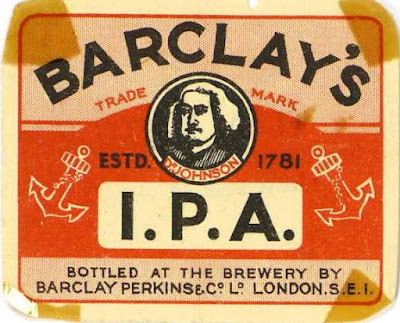The last half of the war was a period of relative stability. Where gravities remained little changed. That trend is obvious with IPA, which remains the same strength as in 1942.
Which isn’t to say that nothing has changed. There’s been some tinkering with the grist. It’s no longer adjunct-free, as a year earlier. And the base is now a split between PA malt and SA malt. I’ve substituted mild malt for the latter.
Loads and loads of Fuggles make up the hops. Four different types in all. Sussex from the 1942 harvest, two lots of Mid-Kent from 1941 and Worcester from 1940. The latter three all having been cold stored.
Given the low hopping rate, it’s no surprise that the IBU level is very unlike what you’d expect from an IPA today.
| 1943 Barclay Perkins IPA (bottling) | ||
| pale malt | 3.00 lb | 43.42% |
| mild malt | 2.75 lb | 39.80% |
| crystal malt 60L | 0.33 lb | 4.78% |
| flaked barley | 0.33 lb | 4.78% |
| No. 1 invert sugar | 0.50 lb | 7.24% |
| Fuggles 105mins | 0.33 oz | |
| Fuggles 60 mins | 0.33 oz | |
| Fuggles 30 mins | 0.33 oz | |
| OG | 1031.5 | |
| FG | 1006 | |
| ABV | 3.37 | |
| Apparent attenuation | 80.95% | |
| IBU | 14 | |
| SRM | 6 | |
| Mash at | 147º F | |
| After underlet | 152º F | |
| Sparge at | 165º F | |
| Boil time | 105 minutes | |
| pitching temp | 60.5º F | |
| Yeast | Wyeast 1099 Whitbread ale | |











































































1 comment:
It would be an interesting exercise to graph WWII beer gravities against U Boat shipping losses. I'd assume it wasn't a perfect match due to things like time lag of harvests and other factors, but there would probably be a strong connection.
Post a Comment